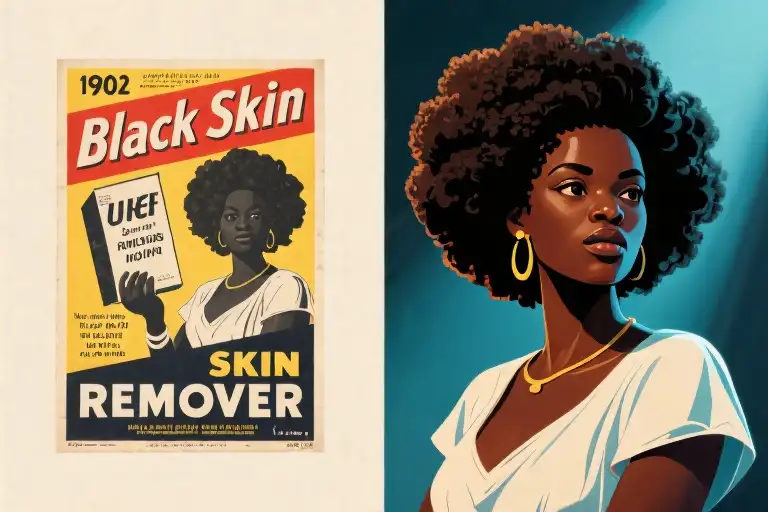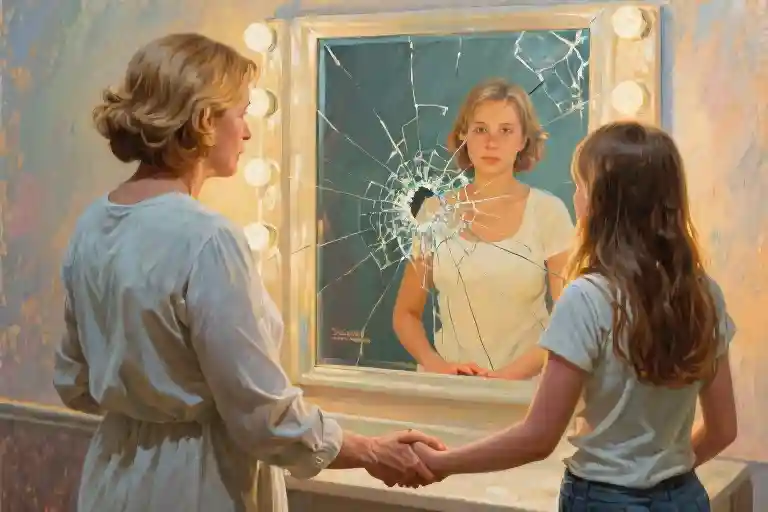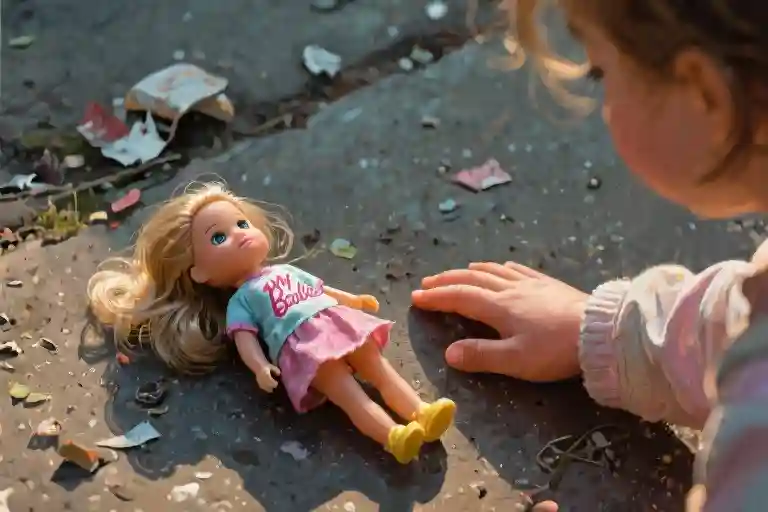In July 2023, a viral Twitter thread exposed a Grammy-winning artist for endorsing a skin-lightening serum, sparking immediate backlash from the Black community. The controversy wasn’t just about celebrity accountability—it revealed how deeply the white beauty standard still permeates our collective psyche. Why does something as seemingly benign as a skincare product ignite such visceral reactions? The answer lies buried in advertisements like Crane & Co.’s 1901 catalog, where bold typography screamed “BLACK SKIN REMOVER” above illustrations of African American women transforming into pale-complexioned figures with bone-straight hair.
This wasn’t mere marketing hyperbole. The ad’s language—promising to turn “a mulatto person perfectly white” in “four or five shades lighter”—codified whiteness as both achievable ideal and erasure of identity. What makes these century-old messages particularly jarring is their uncanny resemblance to modern beauty discourse. Scroll through any influencer’s “glass skin” tutorial today, and you’ll find the same aspiration packaged in subtler terms: “brightening toners,” “complexion correcting,” “taming unruly curls.” The vocabulary has evolved, but the underlying colorism persists.
Historical artifacts like this advertisement function as Rosetta Stones for decoding contemporary beauty standards. They expose how racial hierarchies became embedded in self-care rituals—where “improvement” meant approximating Caucasian features. For Black women navigating today’s “clean girl aesthetic” trends, recognizing this lineage transforms personal insecurities into political awakenings. When we critique a celebrity’s美白 product endorsement, we’re not just debating skincare—we’re challenging an aesthetic caste system that took root generations ago.
The Crane & Co. example also reveals advertising’s role in manufacturing desire. Their “hair straightener” didn’t merely sell a styling tool; it sold shame about natural Afro-textured hair. This psychological burden compounds over lifetimes—mothers pressing hot combs against daughters’ scalps, professionals chemically relaxing curls to appear “workplace-appropriate.” That 1901 pamphlet might seem like a relic, but its ideological fingerprints appear in every “frizz-control” commercial equating sleekness with sophistication.
What makes this discovery empowering rather than demoralizing? Understanding these mechanisms helps dismantle them. When we recognize internalized racism in our own mirror critiques or product choices, we reclaim agency. The same scrutiny applied to that 1901 ad—Why is whiteness positioned as the default? Who benefits from these beauty norms?—becomes a toolkit for analyzing today’s “tinted moisturizers” and “scalp detoxes.”
This isn’t about rejecting self-enhancement but redefining enhancement on our own terms. The natural hair movement’s triumph—from #BlackHairMatterscampaigns to Target’s textured hair product aisles—proves standards can be rewritten. That 1901 advertisement intended to make Blackness disappear; instead, it became evidence in our present-day reckoning with white beauty standards and their lingering shadows.
Decoding Racism in “Black Skin Remover” Ads
The year is 1901. A newspaper advertisement from Crane & Co. boldly proclaims its ability to perform what seems impossible – removing black skin. In thick block letters, the headline screams “BLACK SKIN REMOVER,” followed by promises to lighten complexions by “four or five shades” and turn mixed-race individuals “perfectly white.” This wasn’t some fringe publication; these were mainstream beauty products marketed to Black women as solutions to their “problem” of dark skin and curly hair.
The Language of Erasure
What makes this advertisement particularly insidious is its linguistic strategy:
- Quantified Whiteness: The “four or five shades lighter” claim uses pseudo-scientific measurement to make racial transformation seem achievable and desirable. It creates a false ladder of progress where each lighter shade represents success.
- Biological Determinism: By suggesting skin color could be “removed” rather than lightened, the ad reinforces the idea that Blackness is a surface-level defect rather than an inherent trait.
- Binary Transformation: The promise to make mixed-race individuals “perfectly white” establishes whiteness as a complete, finished state compared to the implied incompleteness of being mulatto.
The Soap Connection
This wasn’t an isolated case. Throughout the early 1900s, soap advertisements frequently used similar racial coding:
- Pears’ Soap (1884): Featured illustrations of Black children washing to become white, with taglines like “The first step toward lightening the race”
- Ivory Soap (1899): Showed a Black child’s skin peeling away to reveal white skin beneath with the caption “Before and After Using”
These campaigns all shared three dangerous assumptions:
- Whiteness equaled cleanliness
- Dark skin represented impurity
- Racial characteristics were mutable through consumer products
Why These Messages Matter Today
While the language has become less overt, the underlying white beauty standard persists in modern marketing through:
- Skin tone correction creams
- Hair relaxer advertisements emphasizing “manageability”
- Colorism in cosmetic shade ranges (where “nude” still defaults to light beige)
Understanding these historical advertisements helps us recognize how systemic racism operates through everyday beauty standards. When we see a 1901 ad promising to “remove” Blackness, we’re seeing the same ideology that today might manifest as a foundation line with 30 light shades and 5 dark ones – just packaged more politely.
The next time you encounter a beauty product claiming to “brighten” or “correct,” remember: the language may have changed, but the ghost of “black skin remover” still haunts the industry.
Whiteness as the Gold Standard: The Theoretical Roots of Colonial Aesthetics
The notion of whiteness as a beauty ideal didn’t emerge in a vacuum. Its roots stretch deep into the soil of colonial history, where European features became synonymous with power, intelligence, and desirability. This chapter examines how these toxic standards became psychologically internalized through the groundbreaking work of Frantz Fanon and real-world examples like 1950s skin tone advertisements in Black magazines.
The Colonial Gaze and Black Inferiority Complex
Psychiatrist Frantz Fanon’s seminal work Black Skin, White Masks (1952) dissected what he called the “epidermalization of inferiority” – the process where Black individuals unconsciously absorb the racist notion that their dark skin makes them less valuable. He described how the colonial gaze taught people to see themselves through the eyes of their oppressors, creating what we now call internalized racism.
Fanon observed this phenomenon in everyday interactions:
- Black children preferring white dolls (later confirmed by the famous Clark doll experiments)
- Women using skin lighteners to appear “more marriageable”
- Men straightening their hair to seem “more professional”
These weren’t mere personal choices but symptoms of what he termed “black skin, white masks” – the psychological burden of performing whiteness while inhabiting Black bodies.
The Magazine Test: Skin Tone Hierarchy in Black Media
During the 1950s, prominent Black publications like Ebony and Jet magazines frequently ran advertisements that reinforced this color hierarchy. A typical ad might show:
- A gradient of skin tones from dark to light with captions like:
- “Too dark for evening wear” (for deep complexions)
- “Just right for social success” (for medium-brown skin)
- “The ideal” (for light-skinned models)
- Problem-solution framing:
- “Tired of being passed over? Try Nadinola Bleaching Cream”
- “Dark elbows ruining your look? Use Ambi Fade Cream”
- Celebrity endorsements: Light-skinned entertainers promoting products that promised to “brighten” one’s complexion
These advertisements created what scholars call colorism – discrimination based on skin tone that persists within communities of color. The unspoken message: proximity to whiteness meant proximity to success.
The Psychological Toll
The consequences of these standards manifested in devastating ways:
- Family dynamics: Mothers warning daughters to “marry light” to “improve the race”
- Economic exploitation: Spending disproportionate income on hair relaxers and skin lighteners (a 2016 study showed Black women spend 9x more on beauty products than white women)
- Mental health impacts: Higher rates of body dysmorphia and anxiety about natural features
Yet even as these advertisements promoted Eurocentric ideals, resistance was brewing. Small notes in magazine margins hinted at change – ads for “Proudly Black” greeting cards or announcements for “Natural Is Beautiful” community events foreshadowed the movements to come.
Why This History Matters Today
Understanding these historical roots helps explain why:
- Modern marketing still uses coded language (“brightening” instead of “bleaching”)
- Workplace discrimination against natural Black hairstyles persists
- The global skin lightening market is projected to reach $11.8 billion by 2026
The good news? As we’ll explore in later chapters, recognizing these patterns is the first step toward dismantling them. When we name the origins of white beauty standards, we take away their power to masquerade as “just preferences.”
From Relaxers to “Professionalism”: The Modern Chains of Beauty Standards
The Dove CROWN Research Study revealed a startling statistic: 37% of Black women have been sent home or know someone who was denied employment opportunities due to their natural hairstyles. This data point exposes how century-old beauty ideals continue shaping workplace discrimination under new terminology like “appropriate office looks” or “professional hairstyles.”
The Linguistic Mask of Bias
Corporate America has developed coded language that perpetuates white beauty standards:
- “Neat appearance” often implies straight or chemically relaxed hair
- “Conservative style” frequently excludes braids, locs, or afros
- “Groomed look” subtly favors Eurocentric hair textures
These seemingly neutral terms create what legal scholar Kimberlé Crenshaw calls “intersectional discrimination” – where race and gender biases combine to form unique barriers for Black women.
Case Studies in Hair Discrimination
- The Military Ban (2014)
The U.S. Army initially prohibited twists and locs, claiming they “present a ragged appearance” until public outcry forced policy changes. - Corporate Incidents (2020-2023)
- A Goldman Sachs employee required to straighten her afro for client meetings
- A Texas waitress fired for refusing to cut her dreadlocks
- A Louisiana woman denied a job interview over box braids
The Economic Impact
The beauty industry profits from this discrimination:
- Black consumers spend 9 times more on haircare than other groups (Nielsen Report)
- The relaxer market remains a $718 million industry despite known health risks
- 80% of Black women report altering their hair for job interviews (Dove Survey)
Reshaping Definitions
Progressive companies are challenging these norms:
Pioneering Policies:
- Unilever’s “Hair Equality” training modules
- Pinterest’s explicit ban on hair discrimination
- The CROWN Act legislation in 23 states
Everyday Resistance:
- #FreeTheHair social media campaigns
- Employee resource groups advocating for inclusive grooming policies
- Gen Z workers rejecting dress codes targeting natural styles
This shift reflects growing recognition that true professionalism measures competence – not compliance with outdated beauty standards. As activist Adjoa B. Asamoah notes: “When we stop spending billions to erase our features, we can invest those resources in building our communities.”
The Natural Hair Revolution: Reclaiming Black Beauty Standards
In 2014, the U.S. Army’s updated grooming regulations banning twists and cornrows sparked nationwide outrage. This watershed moment exposed how institutional policies perpetuate Eurocentric beauty standards, forcing Black women to choose between career advancement and cultural identity. The subsequent #BlackHairMovement became more than a trend – it evolved into a radical act of self-liberation challenging centuries of aesthetic oppression.
When Cornrows Became Controversial
The military’s prohibition of protective hairstyles commonly worn by Black women revealed deeper systemic issues. These regulations framed natural Black hair textures as ‘unkempt’ or ‘unprofessional,’ while chemically straightened or Eurocentric styles remained acceptable. Social media erupted with stories like Specialist Chaunsey Logan’s, who described cutting her locs in tears to avoid disciplinary action. This public backlash led to Congressional hearings and eventual policy revisions, marking a significant victory for hair equality advocates.
What made this moment transformative wasn’t just the policy change, but the collective awakening it triggered. Suddenly, workplace discrimination against natural hair became mainstream conversation. Studies like Dove’s 2019 CROWN Research revealed shocking data – Black women were 80% more likely to change their hair from its natural state to meet office expectations. The movement birthed legislative changes too, with 18 states passing versions of the CROWN Act by 2023 prohibiting hair-based discrimination.
Beauty Brands Breaking Barriers
Parallel to grassroots activism, Black-owned beauty companies began dismantling industry norms. Take The Lip Bar’s viral 2018 campaign rejecting the notion that ‘nude’ should mean beige. Their expanded 12-shade range celebrated deeper complexions, with names like ‘Bawse Lady’ and ‘Black Queen’ reclaiming language historically used to marginalize. Founder Melissa Butler deliberately chose unretouched imagery showing models with afros, braids, and unfiltered skin textures.
This shift reflected changing consumer demands. Market research showed Black women increasingly prioritizing brands celebrating rather than concealing their features. Sales of edge controls and relaxers declined 34% between 2014-2020, while natural hair product lines grew exponentially. Pioneering brands like Pattern Beauty and Mielle Organics didn’t just sell products – they created communities through YouTube tutorials and #WashDay posts normalizing haircare rituals.
The Psychological Liberation
Beyond aesthetics, this revolution addressed deep-seated psychological wounds. Dr. Afiya Mbilishaka, pioneer of psycho-hairapy, explains: ‘When clients stop chemically altering their hair, we often see parallel transformations in self-perception.’ Support groups emerged helping women navigate the transition – from dealing with family criticism to handling workplace microaggressions.
Social media played a crucial role in this healing process. Instagram accounts like @BlackGirlCurls provided evidence-based care techniques, while hashtags like #TeamNatural documented personal journeys. The simple act of sharing unfiltered hair textures became political – a direct challenge to the ‘white beauty standard’ perpetuated by mainstream media.
Sustaining the Momentum
The movement’s next frontier involves institutional change. Educational initiatives like the Texture Education Collective train salon professionals on Afro-textured hair, addressing the shocking statistic that 60% of cosmetology programs dedicate less than 10% of curriculum to Black hair. Investor groups like Fearless Fund now prioritize Black beauty startups, correcting historic underfunding.
Personal stories continue fueling progress. When 7-year-old Faith Fennidy was sent home from school for braided extensions in 2018, her viral video sparked policy reviews nationwide. Such incidents remind us that while relaxer sales decline, systemic bias persists. The revolution isn’t about rejecting straight hair, but about expanding choices beyond historical coercion.
This cultural shift represents more than beauty trends – it’s about rewriting centuries of conditioned self-perception. As activist Michaela Angela Davis notes, ‘Our hair holds our histories.’ From army bases to elementary schools, Black women are finally wearing their crowns unapologetically, proving that true professionalism has no texture requirement.
Conclusion: The Final Mile of Racial Liberation
Beauty freedom isn’t just about skincare routines or hairstyling choices—it’s the last frontier of racial justice. That 1901 Crane & Co. advertisement whispering “black skin remover” still echoes today in subtler forms: the workplace dress code policing natural hair, the “brightening” serums dominating pharmacy shelves, and that unspoken hierarchy where Eurocentric features get labeled “professional” while Afrocentric ones require “taming.”
But here’s what that 120-year-old bleach ad didn’t anticipate: the rebellion already in motion. When the U.S. Army tried banning cornrows in 2014, Black women turned social media into a protest sign with #BlackHairMatters. When beauty aisles offered limited “nude” shades, entrepreneurs like Melissa Butler of The Lip Bar created lipsticks celebrating melanin-rich complexions. These aren’t just trends—they’re acts of reclaiming what generations of ads tried to erase.
Your Turn to Write History
- Vote With Your Wallet
Support Black-owned beauty brands challenging the status quo. Try Pat McGrath Labs’ foundation range (30+ shades designed for deeper skin tones) or Camille Rose’s curl-defining products. Every purchase starves the “whiteness as gold standard” myth. - Amplify The CROWN Act
That 37% statistic about Black women facing hair discrimination at work? The Creating a Respectful and Open World for Natural Hair Act fights this. Sign petitions at www.thecrownact.com and tag legislators using #PassTheCROWN. - Redefine “Professional”
If you’re in hiring/management, audit your dress code for coded language (e.g., “neat” often means “straightened”). Share natural hair selfies with #ProfessionalIsPersonal to normalize texture diversity.
As the great Shirley Chisholm reminded us, “If they don’t give you a seat at the table, bring a folding chair.” Today, we’re not just pulling up chairs—we’re redesigning the entire table. Because true beauty liberation isn’t about lightening or straightening; it’s about thriving exactly as you are.
“The most radical act is loving yourself in a world that profits from your self-doubt.”



